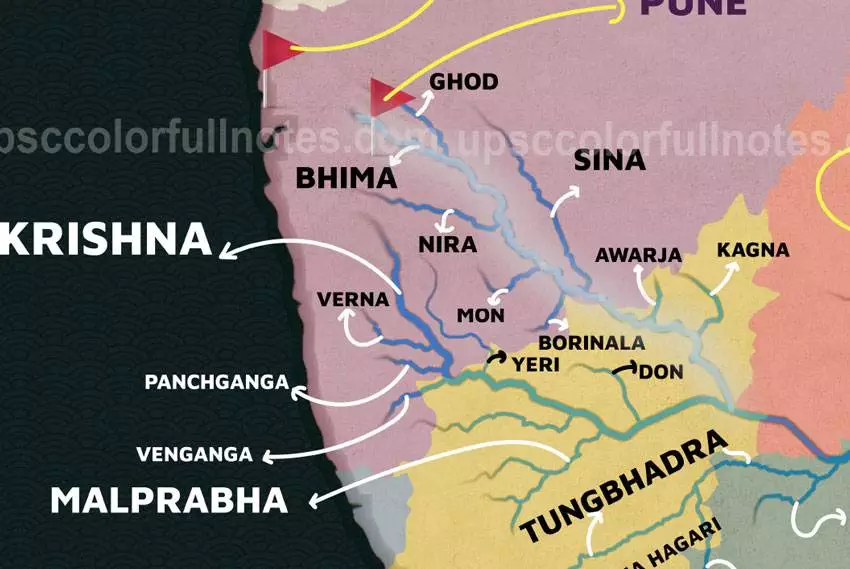Description

Disclaimer: Copyright infringement not intended.
Context
Concerns about pollution were raised recently when hazardous foam on the Indrayani river started to emerge.
About Indrayani River
- The Indrayani River, a tributary of the Bhima River, which itself is a tributary of the Krishna River, originates in Kurvande village near the hill station of Lonavla in the Sahyadri mountains of Maharashtra.
- Fueled by rainfall, it flows eastward, primarily north of Pune, before joining the Bhima River.
- This river holds significant religious importance, with the sacred towns of Alandi and Dehu located along its banks.
- Dehu is renowned as the hometown of the revered poet Saint Tukaram, a prominent figure in Maharashtra, while Alandi is home to the samadhi of the poet Dnyaneshwar.
- Additionally, the Valvan Dam at Kamshet, situated on the Indrayani River, serves as a hydroelectric generating station.

About Bhima River
- The Bhima River, also known as the Chandrabagha River, is a significant watercourse in southwest India, serving as a major tributary to the Krishna River.
- Originating in the Bhimashankar hills near Karjat in the Western Ghats within the Pune District of Maharashtra, the Bhima River flows southeast, traversing through the states of Maharashtra, Karnataka, and Telangana.
- Its course concludes as it merges into the Krishna River at Kadlur (Raichur) in
- Spanning a length of 861 km, this river is flanked by the Western Ghats to the west, the Balaghat Range to the north, and the Mahadeo Hills to the south.
- The river's basin covers a total area of 48,631 sq. km, with 75 percent of it located in the state of Maharashtra.
- Notable tributaries include the Sina and Nira
- Pandharpur, situated on the right bank of the Bhima River, stands out as a significant pilgrimage center.
|
PRACTICE QUESTION
Consider the following statements regarding Indrayani River:
- It is a river that contributes to the Bhima River's flow.
- Its source is in the Western Ghats situated in Karnataka.
Which of the statements given above is/are correct?
A) 1 only
B) 2 only
C) Both 1 and 2
D) Neither 1 nor 2
Answer: A
|












